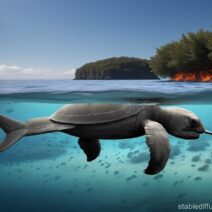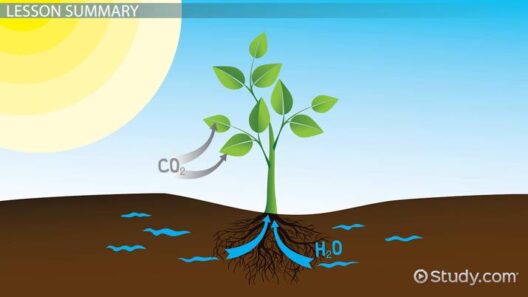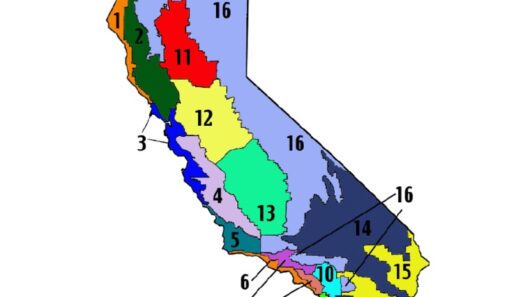Deserts, often deemed as the “searing expanse,” embody nature’s paradox, captivating yet unforgiving. They are locales where extremes reign, and the climate oscillates dramatically between the sweltering embrace of day and the biting chill of night. Understanding the climate in these regions unveils not only the stark beauty of desolation but also the tenacity of life flourishing therein.
The quintessential desert climate is characterized by two primary conditions: aridity and temperature volatility. With annual precipitation often falling below 250 millimeters, these regions can be likened to nature’s arid crucibles. Here, water is both a precious commodity and a fleeting mirage, prompting a unique ecosystem that has masterfully adapted to the rigors of minimal hydration.
Daytime temperatures in deserts can reach staggering heights, with records often soaring above 50 degrees Celsius (122 degrees Fahrenheit). The sun blazes unrelentingly, rendering the earth beneath as parched as parchment. This relentless warmth erodes not just the land but also the resilience of many who venture into its embrace unprepared. In contrast, as twilight descends, the atmosphere shifts dramatically. The nocturnal chill can plunge temperatures below freezing, transforming the landscape into a frigid realm where the cold embraces the ground like a shroud. This stark dichotomy of heat and cold is akin to the harsh realities of life itself, presenting both extremes in their true form.
Understanding the intricacies of desert climate reveals the underlying mechanisms driving these temperature fluctuations. The lack of vegetation leads to minimal heat retention, allowing the sun’s rays to scorch the land during the day, while at night, the absence of clouds permits heat to escape rapidly into the vastness of space. Thus, the desert becomes a realm of contrasts, revealing nature’s penchant for extremes.
Inhabiting these barren landscapes are organisms that, despite their formidable conditions, possess remarkable adaptations. Cacti and succulents, for instance, serve as Mother Nature’s reservoirs, storing moisture within their fibrous tissues. Their spiny exteriors act as a deterrent against foraging animals, while their shallow but extensive root systems capture infrequent rainfalls. This profound adaptation allows these plants to thrive despite the overall scarcity of water, embodying resilience amidst adversity.
Of equal intrigue are the desert animals, many of whom have developed physiological mechanisms to endure the sweltering heat. The fennec fox, clad in its voluminous ears, dissipates heat efficiently during the day and becomes active at dusk when temperatures begin to drop. Similarly, the kangaroo rat possesses a unique ability to extract moisture from its food, thereby minimizing its reliance on external water sources. These survival strategies serve as a testament to evolution’s mastery, crafting a diverse mosaic of life capable of thriving in inhospitable conditions.
The concept of survival in such an environment extends beyond mere physical adaptations. It necessitates a profound understanding of one’s surroundings – a testament to how time-honored traditions have evolved in harmony with the desert. Indigenous communities living in arid landscapes have developed profound knowledge about their environment, learning to navigate the stark contrasts of temperature and the intermittent availability of water. Skilled in the art of foraging and resource management, these communities have thrived, interweaving their narratives with the rhythm of the desert ecosystem.
Moreover, the interplay between climate change and desertification adds further complexity to this arid tapestry. As global temperatures continue to rise, many regions are experiencing shifts in rainfall patterns, exacerbating the already fragile ecosystems of deserts. Such changes not only threaten local flora and fauna but also pose challenges to human populations reliant on these water-scarce landscapes. The consequences are far-reaching, implicating food security, water accessibility, and the overall resilience of these communities.
Surviving in deserts requires an amalgamation of skills, knowledge, and respect for the land. Equipped with the understanding of local climatic patterns, individuals can harness sustainable practices to mitigate the adversities posed by extreme temperatures. Building structures that offer shade during the sweltering days, employing techniques that promote water conservation, and understanding the seasonal rhythms of the ecosystem can all contribute to a more harmonious existence in such stark environments.
Engaging with the desert also evokes an appreciation for its multifaceted allure. The contrasting hues of a sunset against barren sand dunes provide a visual feast, capable of invoking a sense of peace amidst the harshness. The stars, unhindered by artificial lights, dazzle against the night sky, transforming the environment into a celestial theater that narrates the cosmos’ tales. This stark beauty invites introspection, urging humanity to reconsider its relationship with the environment and to cultivate a symbiotic existence with all its forms.
The unique climate of the desert stands as a powerful metaphor for resilience and adaptability. In every grain of sand, in every chilling night, lies a narrative of survival, forged through trials and temperance. Embracing the desert’s profound lessons – humility in the face of nature’s grandeur, and wisdom in understanding its cycles – can illuminate paths toward sustainable coexistence with our planet.







